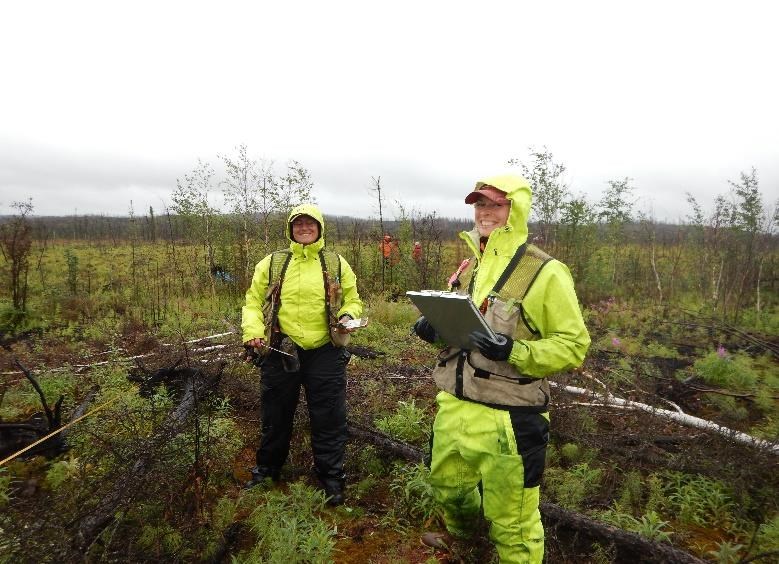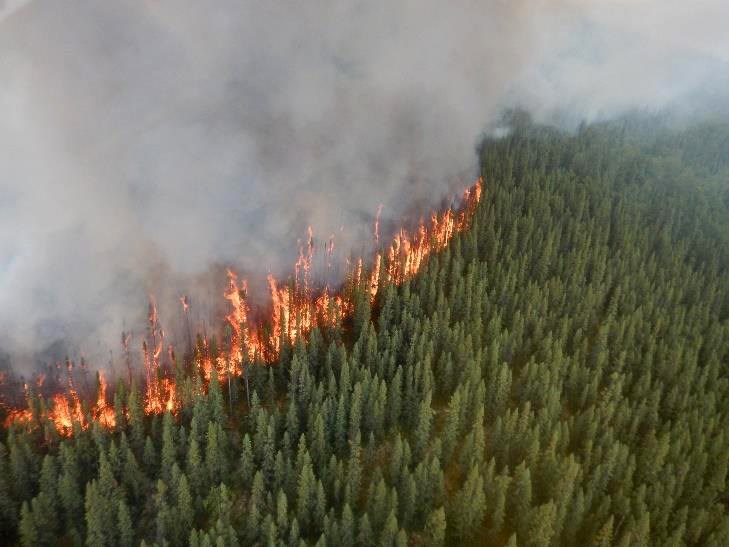Part of a series of articles titled National Park Service Alaska Region Fire Ecology Annual Report Calendar Year 2016.
Article
NPS Alaska Region Fire Ecology Annual Report Summary

NPS photo 2016
During the 2016 field season, the Alaska NPS fire ecology program conducted monitoring at the Wrangell-St. Elias McCarthy University Subdivision fuels reduction site, re-measured plots that have burned multiple times in Denali (Fig. 1), and assisted with fire research projects at both sites. The regional fire ecologists were involved with preparing monitoring protocols, agreements and research proposals, instructing classes, and participating on several agency and interagency committees. Communication and outreach continued to be a focus for the program. This annual report provides a brief summary about the NPS Alaska 2016 fire season, fire ecology monitoring results, fire research projects, and fire ecology program activities and outreach.

NPS photo
2016 Fire Season
The 2016 fire season in Alaska started early, with numerous human starts in April. The early spring was followed by a warm, but very wet summer in much of Interior Alaska and resulted in relatively low number of acres burned for the year statewide. By the end of the season, a total of 573 fires were reported and 500,794 acres burned statewide for Alaska in 2016 (AICC Situation Report Nov. 2, 2016, http://fire.ak.blm.gov/).
National Park Service in Alaska had a moderately active fire season, with a majority of the fires occurring in the Eastern Area Fire Management parks. Five parks had wildfires during the summer of 2016. There were 22 fires that burned within the park boundaries and a total of 59,532 acres burned within and adjacent to the park boundaries (Table 1). Of the area burned, 23,077 acres were on NPS owned lands. Wrangell-St. Elias had the greatest amount of area burned on AKR NPS lands and number of fires in 2016 (20,423 acres, Table 1). The largest fire, Steamboat Creek, burned within the area of 2009 Chakina fire. Yukon- Charley Rivers had several natural fires (Fig. 2), but most remained fairly small. The fire management staff carried out prescribed fire pile burns in Denali and Wrangell-St. Elias during 2016 at 3 sites (Table 1) and accomplished fuels reduction projects at several sites in the parks.
| Park Unit | Number of Wildfires1 | Total Acres Burned1 | Number of Wildfires started on NPS Lands2 | Acres Burned NPS Lands2 | Number of Prescribed Fire Units | Acres of Prescribed Fires |
|---|---|---|---|---|---|---|
| Denali National Park and Preserve | 1 | 3 | 13 | 3 | 2 (Toklat, Kantishna) | 7.3 |
| Gates of the Arctic National Park and Preserve | 1 | 34,591 | 0 | 1,342 | - | - |
| Noatak National Preserve | 1 | 206 | 1 | 206 | - | - |
| Wrangell-St. Elias National Park and Preserve | 11 | 23,034 | 8 | 20,423 | 1 (Slana) | 2 |
| Yukon-Charley Rivers National Preserve | 8 | 1,698 | 4 | 1,103 | - | - |
| Total for Region | 22 | 59,532 | 14 | 23,077 | 3 | 9.3 |
1Includes total number of fires and acres of all fires that burned within or partially within the boundaries of the park unit. NPS boundaries include inholdings of lands not owned or managed by NPS. 2 Number of fires started and acres burned on NPS owned lands (WFMI stats).
Last updated: October 26, 2021
